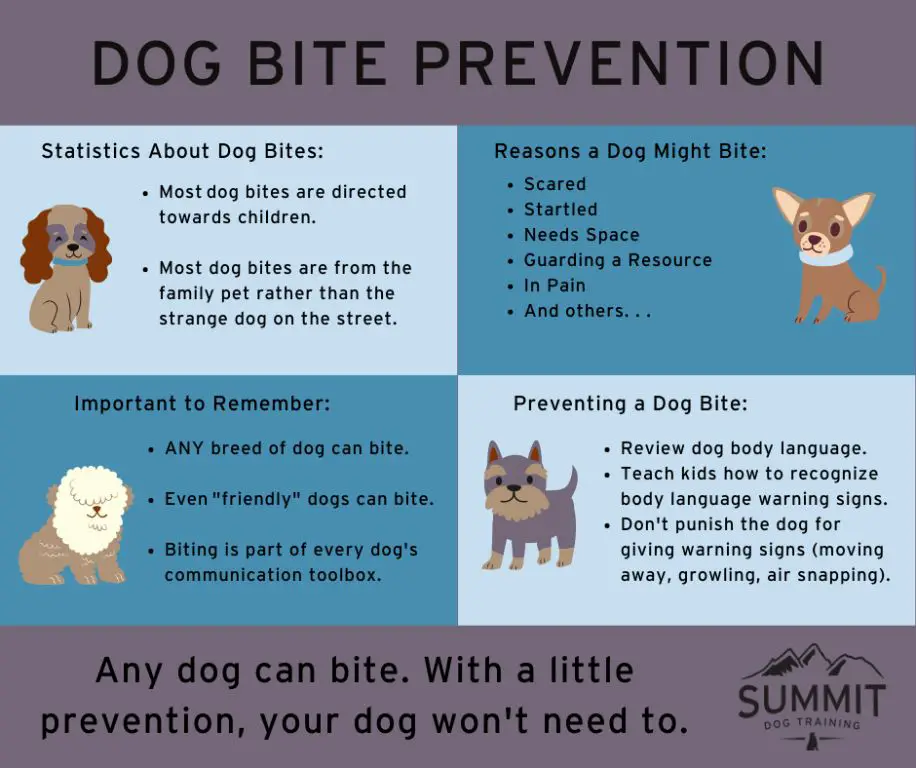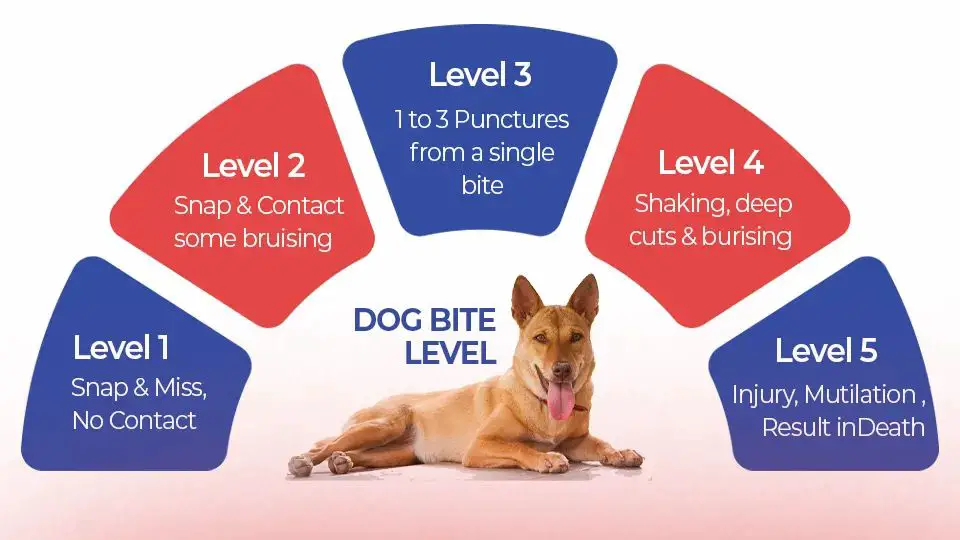Introducing the Topic
Dog bites pose a significant public health concern, accounting for tens of millions of injuries every year in the United States alone. While adults can suffer dog bites, children are disproportionately affected, with the majority of bites happening to kids under the age of 12. According to one study, an estimated 340,000 emergency department visits each year involve children bitten by dogs. Beyond just physical trauma like punctures, lacerations, and scarring, dog bites can also lead to emotional and psychological trauma in children who may develop a lasting fear of dogs.
Not all dogs have the same likelihood of biting. Certain breeds tend to be more aggressive due to selective breeding traits. Understanding breed-specific risks, as well as other factors that may prompt a dog to bite, can help parents and dog owners reduce the chances of bites happening. This article provides an overview of dog breeds most likely to bite children, risk factors for bites, tips on prevention, and guidance on how to respond if a child is bitten.
Why Dogs Bite
Dogs bite for a variety of reasons, many of which relate to natural canine behaviors and instincts. Some of the most common causes of dog bites include:
Territorial Behavior
Dogs are naturally territorial animals and may bite to protect their territory, food, toys, space, owners, and more. This is especially true of dogs that are not properly socialized from a young age. According to the ASPCA, “a lack of proper socialization and training is likely the greatest factor that leads to aggression in dogs.”

Fear
When dogs feel threatened or afraid, they may bite as a defensive reaction. Fast movements, loud noises, leaning over the dog, and unfamiliar people can trigger fear-based biting.
Pain
Dogs in pain from an injury, illness or condition may bite when touched or handled, even by their owners. Children may accidentally hurt a dog by pulling on ears or tails.
Maternal Instinct
A mother dog’s strong maternal drive to protect her puppies may lead her to bite children or other animals approaching her litter. Such bites are often warning nips rather than full attacks.
Prey Drive
Some dogs are bred to hunt, chase or kill prey. Fast movements or high-pitched voices from children can trigger a dog’s prey drive and lead to nipping, mouthing or biting.

Lack of Training/Socialization
Dogs that lack proper socialization and training are more likely to bite due to fear, territorial instincts, or poor manners. Ongoing training and socialization prevents many bites.
Breed Traits and Tendencies
Certain breeds like pit bulls and Rottweilers do have a higher bite strength compared to other dogs due to their large jaws and head size (Country Living). Some studies have measured pit bulls to have a bite force over 200 PSI. However, it’s important to note that no breed is inherently aggressive or likely to bite without the influence of environmental factors.
While some breeds may be bred for guarding and have higher bite strength, a dog’s tendency to bite depends much more on its individual temperament, training, socialization, health, and the way it has been treated by owners. Any breed can become aggressive and prone to biting if it is isolated, abused, encouraged to be mean, or lacks positive training (Carlson Attorneys).
So while breed traits can contribute in a minor way, a dog’s environment plays a much bigger role in biting tendencies. With proper care, socialization and training, even stereotypically “aggressive” breeds like pit bulls can make wonderful family companions.
Risk Factors
There are several factors that increase the risk of a dog biting a child. One major risk factor is a lack of proper training and socialization for the dog. Dogs that are not exposed to children early on or taught how to properly interact with them are more likely to bite out of fear or confusion (Pet dog bites in children: management and prevention).

Another risk factor is abuse or neglect. Dogs that are mistreated, abused, or neglected are more prone to aggression and biting as a learned defensive behavior. They may lack trust in humans and see children as threats (Factors Associated With Bites to a Child From a Dog Living in the Household).
Unneutered male dogs are also more likely to bite than neutered dogs. Intact males tend to be more territorial and aggressive, putting children at higher risk of being bitten (Dog bite prevention).
Chained dogs that cannot escape perceived threats are another risk factor. They may feel cornered and bite out of fear. Small children who cannot read a dog’s warning signs are also at higher risk of being bitten.
Prevention Tips
There are several ways to help prevent dog bites, especially in children. Proper socialization, training, and supervision of dogs are key. It’s also important to understand dog body language and warning signs.
Socializing dogs from a young age can reduce aggressive tendencies. Expose puppies to a variety of people, environments, and other animals in a positive way. Ongoing socialization and training reinforces good behaviors. Consider professional training for dogs that exhibit problematic behaviors.
Always supervise interactions between dogs and young children. Do not leave infants or young children alone with any dog. Closely monitor play and watch for signs of fear or aggression in either the dog or child. Teach children how to gently interact with dogs.
Pay attention to a dog’s body language. Dogs often give warning signs before biting, such as growling, ears back, tail down, hackles raised, lip curling, snarling, or teeth baring. Remove children from any situation where a dog is displaying these signs and seek professional help for the dog if needed.
Using secure fencing, crates, and gates can prevent opportunities for bites. Dogs should not have access to areas where children play. Leash dogs when outside and avoid chained or tethered dogs, as these can become territorial.
Spaying/neutering may decrease aggressive tendencies. Dogs that are in pain, ill, or protective of territory, food, or toys are more likely to bite. Manage these situations appropriately.
What To Do If Bitten

If your child is bitten by a dog, it’s important to seek medical attention right away, even if the bite does not appear serious. Open wounds should be thoroughly cleaned and assessed to determine if stitches or other treatment is required to avoid infection. Tetanus shots may also be recommended if your child is not up-to-date.
In addition to medical care, it’s important to report dog bites to your local animal services or animal control department. This creates a record of the incident in case further action needs to be taken or if legal issues arise. Be prepared to provide details like where and when the bite occurred, the severity of the injury, and information about the dog and its owner.
Before deciding to rehome or euthanize a dog that has bitten, consult an animal behaviorist. They can assess the dog’s temperament and provide training tips to correct any aggressive tendencies. However, if the bite was severe or the dog has a history of aggression, the safest decision may be to humanely euthanize it or surrender it to a shelter. The risk to children should be carefully evaluated.
Bites should not simply be brushed off. Taking prompt action ensures your child’s physical and emotional recovery while also preventing future incidents. However, not all dogs that bite are inherently dangerous with proper training and containment measures.
Legal Considerations
When it comes to dog bites, there are several legal considerations to keep in mind. Most states have laws regarding dog owner liability, dangerous/vicious dogs, and reporting requirements after a dog bite occurs.
In terms of liability, most states follow the “one bite rule,” which means dog owners are only liable if they knew or should have known their dog had a propensity for aggression before the bite occurred. However, some states have “strict liability” laws where the dog owner is liable regardless of whether they knew the dog was dangerous beforehand [1]. There are also differences between states regarding liability insurance requirements for dog owners.
When a dog seriously injures or kills someone, it may be legally designated as “dangerous” or “vicious.” States have varying definitions and restrictions for dangerous dogs, including things like muzzling, restraints, confinement, warning signs on the property, and even euthanasia in certain cases [2].
Most states also have laws requiring medical professionals and/or animal control to be notified after a dog bite injury. Failure to report serious bites may result in fines or criminal charges in some areas. Additionally, there are different statutes of limitations for filing a dog bite lawsuit that depend on the state.
The Outlook
While dog bites remain an issue, there are signs of improvement due to better understanding of dog behavior and increased efforts around training and socialization.
Research into canine psychology and behavior has grown significantly, providing insights into factors that contribute to aggression and bite risk in dogs. This allows owners, trainers, and breeders to better socialize and train dogs from a young age to reduce biting tendencies. Proper socialization and training can make a major difference in a dog’s temperament. Studies show that the majority of bites involve dogs that owners have identified as needing training or behavioral intervention.
There is also a trend toward regulating or restricting ownership of certain problematic breeds that are overrepresented in bite statistics, like pit bulls. Many areas now require special permits or liability insurance to own breeds with higher incidents of aggression. While breed-specific legislation remains controversial, some data indicates declines in hospitalizations after regulations targeting high-risk breeds. Experts argue that a nuanced, evidence-based approach is needed.
Continued public education around dog safety, especially for children, is also critical to further reducing bites. Teaching kids how to properly interact with dogs and spot signs of aggression can help prevent provoking bites. Ongoing efforts in this area combined with our expanding knowledge of dog behavior paint an optimistic picture for reducing dog bites in the future.
Key Takeaways
When it comes to dogs biting children, there are a few key takeaways to keep in mind:
-
Supervision of both dogs and children is absolutely critical. Children should never be left alone unsupervised with dogs.
-
Proper socialization and training of dogs can help minimize the risk of biting incidents. Dogs that are well socialized are less likely to be fearful or reactive.
-
Education about dog body language and behavior goes a long way. Learn to read stress signals in dogs and understand what situations may provoke them.
-
While some breeds may be more prone to biting, any dog is capable of it given the right circumstances. Breed tendencies are not a reliable predictor.
-
Be cautious with dogs around children, but try not to react out of fear. With proper precautions and education, severe biting incidents can often be avoided.
The key is not to vilify dogs or breeds, but rather focus on prevention through responsible supervision, socialization, training, and understanding of dog behavior and body language. Exercise reasonable caution, but avoid living in fear – most dogs do wonderfully living and interacting safely with children.
References/Resources
Looking to learn more about dog breeds and dog bites? Here are some informative resources:
- American Kennel Club – Dog Breeds – Detailed background information on dog breeds recognized by the AKC.
- CDC – Dog Bite Prevention – Safety tips and statistics from the Centers for Disease Control.
- ASPCA – Dog Bite Prevention – Advice from the American Society for the Prevention of Cruelty to Animals on bite prevention.
- Canine Journal – Dog Bite Statistics – Statistics on dog bites in the United States.
- AVMA – Dog Bite Prevention – Tips from the American Veterinary Medical Association to prevent dog bites.
Consult with your veterinarian for breed-specific advice. Report serious bite incidents to animal control or law enforcement.